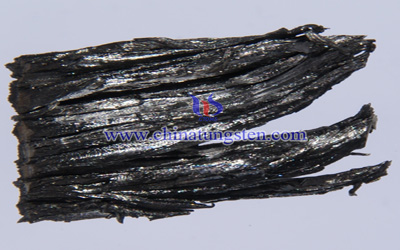Basic Knowledge About Dysprosium
- Details
- Category: Rare Earth News
- Published on Thursday, 14 March 2013 15:36
Dysprosium (Dy, atomic number 66) was discovered in 1886 by Lecoq de Boisbaudran, but not isolated. The oxide and metal wasn’t available in relative pure form until 1950 when development of ion exchange separation and metallographic reduction techniques were created by Spedding and associates. Dysprosium occurs along with other rare earths in a variety of minerals such as: xenotime, fergusonite, gadolinite, euxenite, polycrase and blomstrandine. Monazite and bastnasite are the most important sources. Dysprosium can be prepared by reduction of the trifluoride with calcium. The metal is a metallic bright silver luster. Dysprosium is relatively stable in air temperature and is readily attacked and dissolved by dilute and concentrated mineral acids to evolve hydrogen. The metal is soft enough to be cut with a knife and can be machined without sparking if overheating is avoided. Small amounts of impurities can greatly affect its physical properties. Dysprosium is very reactive and therefore is stored in foil. Its thermal neutron absorption cross section and high melting point suggest metallurgical uses in nuclear control applications for alloying with special stainless steels.

Some known uses for Dysprosium are as follows:
Strong, Permanent Magnets- dysprosium along with neodymium is used in the production of the world’s strongest permanent magnets. The magnets have high magnetic strength but lower weight. Such magnets are used in electronic motors to produce higher power and torque with much lower size and weight.
Hybrid/Electric Vehicles use these magnets.
Miniaturization of hard disk drives and many electronic devises also use these magnets.
Nuclear fuel rods- due to its ability to capture neutrons. It modulates how hot a nuclear reaction is getting. It is used in power stations to prevent nuclear reactions from getting out of control.
If mixed with cadmium and sulfur it can be used in devices that use infrared. Chemists use infrared quite often, when a sample/compound is radiated with infrared absorbance will occur. This is specific to stretching or bending. It is a way of scanning molecules and getting information about their composition and structure.
A dysprosium oxide-nickel cement can be used in cooling nuclear reactor rods. The cement absorbs neutrons readily without swelling or contracting under prolonged neutron bombardment.
Laser materials-in combination with other rare earths and vanadium, dysprosium has been used for laser materials.
稀土供应商:中钨在线科技有限公司
产品详情查阅:http://www.chinatungsten.com
订购电话:0592-5129696 传真:0592-5129797
电子邮件:sales@chinatungsten.com
钨新闻、价格手机网站,3G版:http://3g.chinatungsten.com
钨新闻、价格手机网站,WML版:http://m.chinatungsten.com



 sales@chinatungsten.com
sales@chinatungsten.com